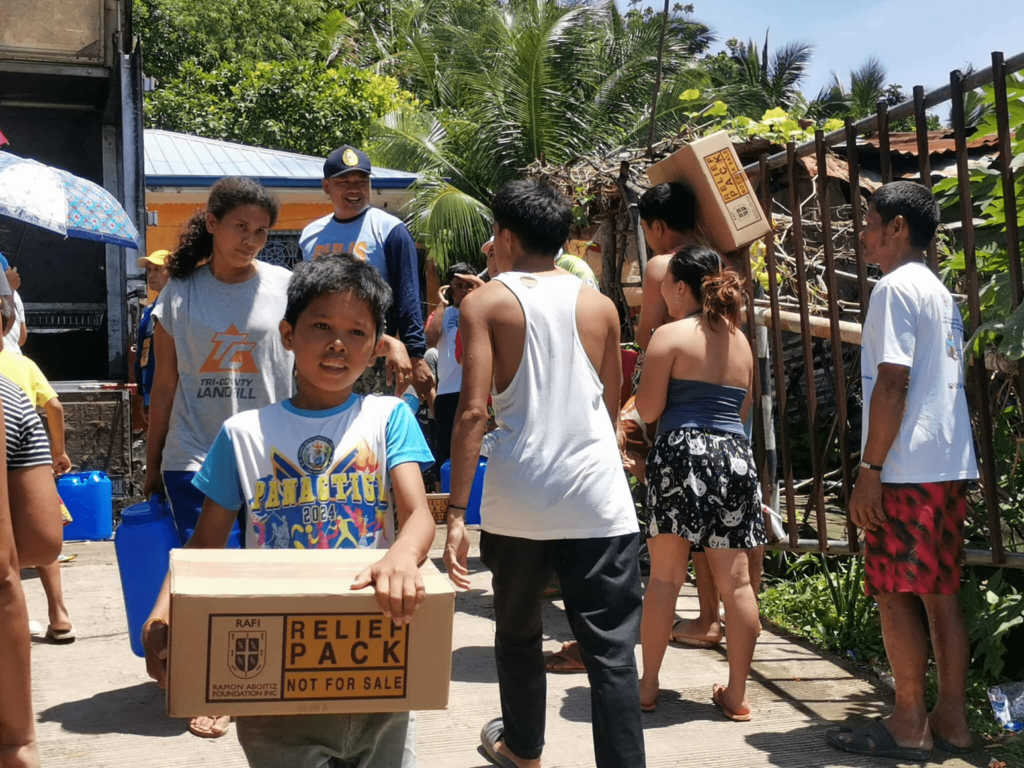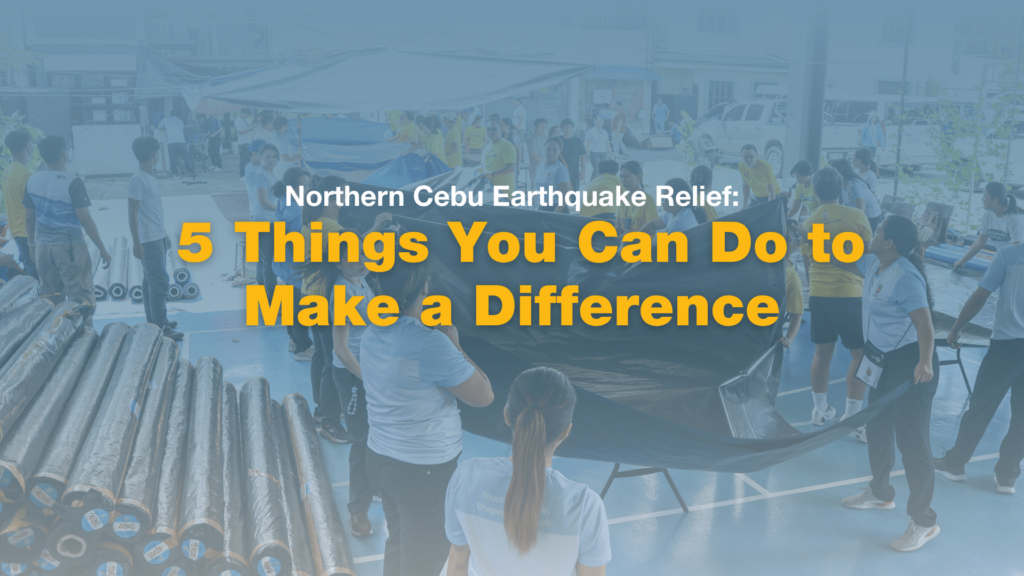
If you are reading this article, you might be thinking, at what point does a greener Cebu affect our fishermen when they are in sea rather than the forest in land? Well, guess what? The seas have forests too, and they are called mangrove forests.
Why are mangroves important?
In an article by the UN Environmental Programme, mangroves are the only trees that thrive in salty waters and improve water quality by filtering out nutrients and sediments. They become home to fishes and birds who use the shallow waters in mangrove trees as nurseries. Apart from that, mangroves are strong candidates of helping us combat climate change through carbon sequestration as they are some of the most carbon-rich ecosystems on the planet, storing on average 1,000 tonnes of carbon per hectare in their biomass and underlying soils.
Mangroves and Fishermen
In the coastal areas of San Remigio, the livelihood of many families revolves around fishing in the sea and farming in the uplands. For generations, the area’s fisherfolk have relied on the bountiful waters for their daily sustenance and income. Michael Miscala is one of these fishermen. A 49-year-old with weathered hands, braving the sea every day with a heart full of dedication to both his trade and the environment. At dawn, Michael sets sail on the ocean with hopes of bringing home a substantial catch to sell to a local vendor. He sells his fish for around Php 20 per kilo and typically catches at least 4 kilos per fishing trip, though the amount can vary due to occasional slow days. This was his usual routine until the mangrove growing project of the Ramon Aboitiz Foundation, Inc. (RAFI) through its tree-growing program One to Tree (RAFI OTT) came into the picture.
In 2022, RAFI OTT, in partnership with GCash’s GForest feature, initiated a tree-growing initiative in the seaside areas of San Remigio. Collaborating with the local government to identify registered people’s organizations (POs) in the area, RAFI OTT identifies the POs that pass screening and the standardized planting area requirements to grow the mangroves. Aimed to increase forest cover in Cebu and mitigating the effects of climate change, the project also provided sustainability for the partner POs through livelihood augmentation.
During implementation, POs underwent training sessions on how to plant and maintain mangroves, understanding their environmental importance. This ensured they didn’t just blindly plant but developed a comprehensive understanding of the benefits, transcending typical planting to actual growing, monitoring, and maintenance.
With the project’s introduction, Michael’s days after fishing were then followed by planting and/or monitoring their planted mangroves. As an active member and the treasurer of the Victoria Community-based Resource Management Association (VCBRMA), he and his community began to understand the critical role of the mangrove forests that fringed their shores.

“Dako kaayo nig ikatabang sa mga namuyo dinhi sa daplin sa dagat, kay igka dagko ani, cover ni sa mga dagkong bawd. Unya ang mag isda ani, daghan na kaayong mga isda kay mopasilong man ang isda dinha,” Michael shared.
“This is a great help for those living by the sea. When these mangroves grow, they will provide a barrier against big waves. Fish will also thrive here, as they find shelter among the mangroves,” Michael shared.
Michael also highlighted how the project has helped their members financially, especially those like him who rely on the ocean for their livelihood. “Sa among huna huna man if apil mi sa RAFI OTT, for improvement ni sa among mga members, kay naa man tay mga benefits if makakuha mig project like kaning sa mangrove. Bisag ginagmay lang, makatabang gyod ni sa among isig ka pamilya nga kaming mga nagsalig lang sa dagat, makadugang ug income,” he explained.“We thought joining RAFI OTT would improve our members’ lives because we receive benefits from projects like this mangrove initiative. Even small contributions help us, families who rely on the sea, by augmenting our income,” he explained.
Michael’s curiosity was piqued when he joined a mangrove planting operation, initially participating with hopes that the mangroves would sustain and grow. Through the RAFI OTT program, he was better introduced to the significance of mangroves, which fostered a deep love and concern upon growing them.
“Ako malipay ko magtan-aw sa mga ingon ani [mangrove nga buhi ug nitubo], akong kasingkasing murag mo buka. Pero ug mag tan-aw ka nga daghan ug sagbot nya nanghapa tungod sa lumot, sus! Mura pod ug mahugno imong kuan uy [kasing kasing]. Murag maguol ka mag tan-aw,” he said.
“I am happy to see these mangroves grow. It makes my heart swell with pride. But when I see them covered in trash or fallen due to algae, it breaks my heart. It’s disheartening,” he said.
He recalls how vulnerable their seaside areas were to strong winds and typhoons before the mangroves started to grow thickly. “[Ang mga tungkil,] dako na kaayo nag ikatabang sa mga mananagat sa umaabot na henerasyon kay kung wala ning mga mangrove unya sugaton pas mga pukot, wa nagyoy kapasilongan ang mga isda. Naa na gyoy kapasilongan ug makapangitlog na ang mga isda,” he further explained.
“Mangroves are a big help for future generations of fishermen. Without these mangroves, there would be no shelter for fish to lay eggs. Now, there is a place for fish to seek refuge and reproduce,” he further explained.

Now starting to plant and grow the third phase of the project, Michael remains hopeful that their mangroves will grow into beautiful trees. When asked if they plan to sustain the project, he proudly said yes! “Amo manang gi tanom, bisag kinsa pan ana project, especially kani sa RAFI, sakit man among dughan kung bisag unsa na kadagko dira kung mag tan-aw kang naay mamutol, kinsa may using nagprotektar ana? Ang asosasyon gyod, kami gyod. Amo manang gi tanom, amo sad gyod nang I manage,” he elaborated.
“We planted these mangroves. No matter who initiates a project, especially RAFI, it pains us to see anyone cut them down. Who will protect them? The association will, we will. We planted them, so we will manage them,” he elaborated. Michael also mentioned that their association conducts regular monitoring and check-ups at each mangrove site, ensuring their mangroves are healthy and alive. If some planted mangroves die, their nursery has enough seedlings for replanting and replacement. The VCBRMA PO has grown approximately 60,000 mangroves since the project’s implementation in 2022. This year, they are targeting to plant 50,000 more as part of the 2nd part of the project.
Michael’s story is a powerful reminder of the vital link between environmental stewardship and community well-being. By taking responsibility for their natural resources, the fisherfolk of San Remigio not only improved their own livelihood but also ensured a sustainable future for generations to come. As a fisherfolk’s day ends, the mangroves stand—a testament to the power of community action and the enduring spirit of those who call this coastal paradise, their home.


